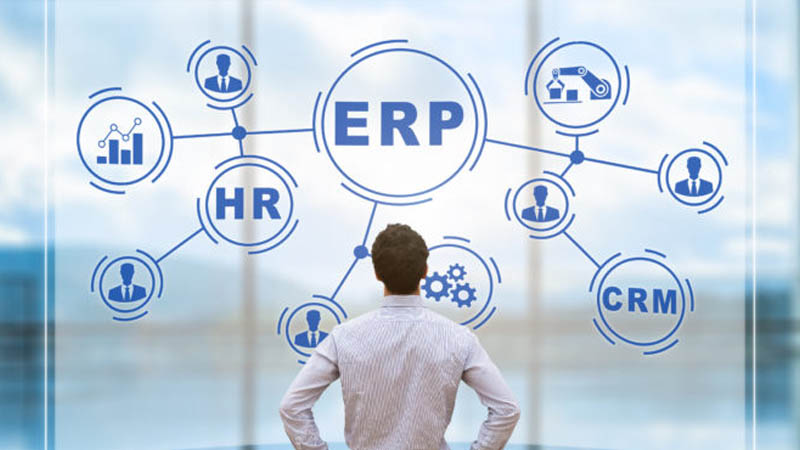Table of Contents
In today’s dynamic business landscape, staying ahead requires more than just traditional accounting practices. As organizations grow, the complexity of financial management increases exponentially. This is where Enterprise Resource Planning (ERP) accounting software steps in, revolutionizing the way businesses handle their financial processes. In this comprehensive guide, we’ll delve into the world of ERP accounting software, exploring its benefits, key features, implementation considerations, and the top solutions available in the market.
Chapter 1: Understanding ERP Accounting Software
1.1 What is ERP Accounting Software?
ERP accounting software is a sophisticated solution that integrates various financial processes within an organization. It goes beyond basic bookkeeping, providing a centralized platform for managing financial transactions, tracking expenses, handling payroll, and generating insightful reports. The primary goal is to streamline accounting workflows and enhance overall efficiency.
1.2 The Evolution of ERP Accounting Software
Explore the historical development of ERP accounting software, from its inception to the advanced, cloud-based solutions available today. Understand how these systems have evolved to meet the ever-changing needs of modern businesses.
Chapter 2: Key Features of ERP Accounting Software
2.1 Financial Reporting and Analysis
Learn how ERP accounting software empowers organizations with robust reporting capabilities, enabling real-time analysis of financial data. Discover how customizable dashboards and visual representations provide insights crucial for strategic decision-making.
2.2 Integration with Other Business Processes
Explore the seamless integration of ERP accounting software with other business functions such as supply chain management, human resources, and customer relationship management. Understand how this integration fosters cross-departmental collaboration and data consistency.
2.3 Automation of Repetitive Tasks
Discover the time-saving benefits of automation in ERP accounting software. From invoice generation to reconciliation, automation reduces manual errors and allows finance teams to focus on value-added tasks.
2.4 Compliance and Security
Examine the critical role of ERP accounting software in ensuring compliance with financial regulations and safeguarding sensitive data. Learn about the security measures implemented to protect against cyber threats and unauthorized access.
Chapter 3: Benefits of Implementing ERP Accounting Software
3.1 Enhanced Efficiency and Productivity
Understand how ERP accounting software streamlines financial processes, eliminating redundancies and reducing the time spent on manual tasks. Increased efficiency translates to higher productivity and faster decision-making.
3.2 Improved Accuracy and Data Integrity
Explore how the automation of accounting processes minimizes the risk of human error, ensuring accurate financial records. Learn how ERP systems maintain data integrity across the organization.
3.3 Scalability and Flexibility
Discover how ERP accounting software accommodates the growth of businesses by offering scalable solutions. Whether an organization is a small startup or a large enterprise, these systems can adapt to changing needs.
3.4 Cost Savings
Examine the cost-saving potential of ERP accounting software through reduced operational expenses, minimized errors, and optimized resource allocation. Calculate the return on investment (ROI) that organizations can achieve over time.
Chapter 4: Considerations for Implementing ERP Accounting Software
4.1 Needs Assessment
Learn the importance of conducting a thorough needs assessment before implementing ERP accounting software. Understand how aligning the software with specific business requirements is crucial for success.
4.2 User Training and Adoption
Explore strategies for ensuring successful user adoption through comprehensive training programs. Discover the significance of having an engaged user base to maximize the benefits of ERP accounting software.
4.3 Cloud-Based vs. On-Premises Solutions
Compare the advantages and disadvantages of cloud-based and on-premises ERP accounting solutions. Evaluate factors such as cost, accessibility, and data security to make an informed decision.
4.4 Vendor Selection
Explore the criteria for selecting the right ERP accounting software vendor. Consider factors like reputation, support services, and the vendor’s track record in serving businesses similar to yours.
Chapter 5: Top ERP Accounting Software Solutions in 2023
5.1 SAP S/4HANA
Explore the features and capabilities of SAP S/4HANA, a leading ERP accounting solution known for its real-time analytics and advanced financial functionalities.
5.2 Oracle NetSuite
Discover how Oracle NetSuite provides a cloud-based ERP accounting solution that integrates financial management with other critical business processes.
5.3 QuickBooks Enterprise
Explore QuickBooks Enterprise, a popular ERP accounting software tailored for small and medium-sized enterprises (SMEs), offering user-friendly interfaces and powerful financial tools.
5.4 Microsoft Dynamics 365 Finance
Learn about Microsoft Dynamics 365 Finance, an ERP solution that integrates seamlessly with other Microsoft applications, providing a comprehensive financial management platform.
In conclusion
ERP accounting software stands as a cornerstone for modern businesses seeking to optimize their financial management processes. From enhanced efficiency and accuracy to scalability and flexibility, the benefits of implementing ERP accounting software are undeniable. By understanding the key features, benefits, and considerations involved, organizations can make informed decisions and select the right ERP solution to propel their financial success in 2023 and beyond.



